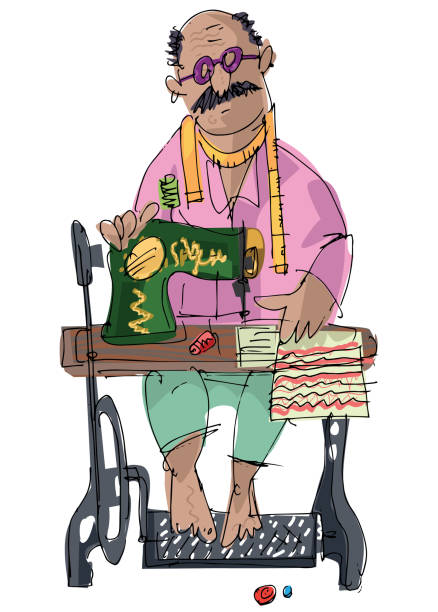Professional Tailor Perth: Crafting Custom Suits for every single Event
Professional Tailor Perth: Crafting Custom Suits for every single Event
Blog Article
Comprehending the Tailoring Process: From Fabric Selection to Last Fitting for the Suitable Wardrobe
The customizing process is an intricate interplay of art and scientific research, beginning with the crucial choice of fabric option and culminating in the specific modifications of last fittings. Each textile type brings special qualities that affect not only the aesthetic allure but additionally the garment's longevity and viability for various events.
Significance of Textile Selection
Selecting the appropriate fabric is crucial in the tailoring procedure, as it directly affects the convenience, toughness, and overall aesthetic of the final garment (tailor perth). The choice of textile establishes the foundation for the garment's design, performance, and efficiency. Various textiles possess special residential or commercial properties, such as weight, stretch, and breathability, which can dramatically affect how the garment drapes and fits the body
Moreover, material selection impacts the garment's longevity and convenience of treatment. High-grade textiles can stand up to wear and tear, preserving their look and structure in time, while lower-quality materials may cause pilling or fading. Additionally, the best textile adds to the garment's capacity to change throughout celebrations and seasons, consequently boosting adaptability.
A customized piece made from an appropriate textile not just showcases workmanship but likewise raises the wearer's self-confidence. Comprehending the subtleties of material selection is vital for any kind of tailoring venture. It makes certain that the end product not only satisfies the aesthetic needs of the client yet likewise aligns with practical requirements, therefore accomplishing an unified balance in between type and feature in the tailored closet.
Kinds Of Fabrics and Their Usages
Understanding the different types of materials available is crucial for making informed decisions throughout the tailoring process. Each textile possesses special characteristics that determine its viability for particular garments and celebrations.
Cotton, known for its breathability and softness, is suitable for casual wear and summertime clothing. Its flexibility permits it to be tailored into whatever from t shirts to dresses. Wool, on the various other hand, is preferred for its warmth and structure, making it a superb choice for formal fits and outerwear - tailor perth. Its all-natural flexibility helps garments maintain shape gradually.
Silk radiates high-end and is light-weight, making it excellent for eveningwear and fragile shirts; however, it requires careful handling due to its delicacy. Bed linen, with its textured finish, is a preferred choice for cozy climates, providing a crisp and airy feeling, yet it wrinkles quickly, which may impact the garment's look.
Artificial textiles, such as polyester and nylon, offer resilience and resistance to wrinkles, making them ideal for daily wear and active clothing. Recognizing these fabric kinds and their residential properties enables much better decision-making, making sure that each customized item not only fits well yet also lines up with the intended purpose and celebration.
The Tailoring Techniques Clarified
The art of tailoring counts on a variety of strategies that change material into well-fitted garments. Central to this process is pattern drafting, where a tailor produces layouts based upon the client's measurements and preferred design. This initial step makes certain that the garment will certainly fit the wearer appropriately before any advice type of reducing takes place.
As soon as patterns are established, cutting methods enter into play. Precision is extremely important as errors can lead to misfitting garments. Tailors usually use different reducing techniques, such as single-layer cutting for intricate designs and multiple-layer reducing for efficiency on standard patterns.
Basting is an additional vital strategy, enabling dressmakers to briefly sew material assemble for find this an initial fitting. This approach provides the possibility to evaluate the drape and overall shape prior to last sewing.
Seaming techniques, including flat-felled seams and French joints, enhance the garment's resilience and visual appeal. Tailors likewise employ methods such as interfacing and cushioning to provide structure and form to specific areas, like collars and shoulders.
Finally, finishing methods, consisting of hemming and side finishing, make sure the garment's longevity while supplying a sleek look. Together, these methods create the foundation of efficient tailoring, leading to elegant, custom-fit clothing.
Fitting Changes and Factors To Consider

Secret factors to consider include the shoulder fit, which ought to neither droop neither limit motion, and the sleeve length, which need to permit comfy arm activity while preserving a polished look. In addition, modifications at the waistline can refine the silhouette, with alternatives to allow out or take in textile as needed.
The increase of trousers is an additional essential aspect; it ought to rest easily over the hips without causing pain, allowing for convenience of motion. Hemming lengths for both pants and skirts should mirror the wearer's recommended style while valuing percentages.

Keeping Your Tailored Clothes
Constantly adhere to the treatment label instructions, which may suggest completely dry cleaning for delicate fabrics or device washing for more sturdy materials. Avoid constant laundering, as this can put on down the material and change the garment's shape.
Storage space is just as crucial; use padded wall mounts for coats and coats to keep shoulder framework, and store pants folded nicely or hung to avoid creasing. Secure garments from direct sunshine, which can fade colors and damages fibers.
Furthermore, periodic inspections for small repair work can prevent bigger problems. Check for loosened buttons, tearing seams, or indicators of moth damages, dealing with these troubles immediately to maintain the garment's honesty.
Finally, take into consideration seasonal turning. Wearing customized pieces in small amounts enables textiles to recuperate, expanding their life expectancy. By implementing these upkeep techniques, you can make certain that your tailored garments continue to be as beautiful as the day you initially wore them, boosting your optimal closet for many years ahead.
Conclusion
The customizing procedure, incorporating fabric selection, competent methods, and specific look at more info suitable changes, plays a critical function in developing garments that boost both convenience and design. Recognizing the relevance of upkeep expands the life of customized garments, strengthening their worth in a well-curated closet.
Selecting the best material is important in the tailoring process, as it directly affects the convenience, longevity, and total visual of the final garment. The selection of fabric establishes the structure for the garment's design, performance, and performance. Various textiles possess unique residential properties, such as stretch, breathability, and weight, which can considerably affect just how the garment drapes and fits the body.
The art of tailoring relies on a selection of methods that change material into well-fitted garments.The customizing process, incorporating material option, proficient techniques, and specific fitting adjustments, plays a vital role in developing garments that improve both convenience and style.
Report this page